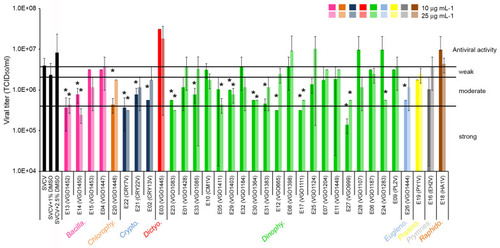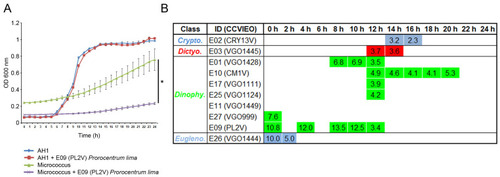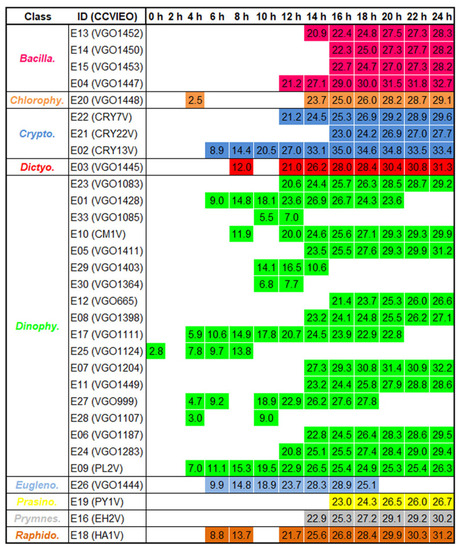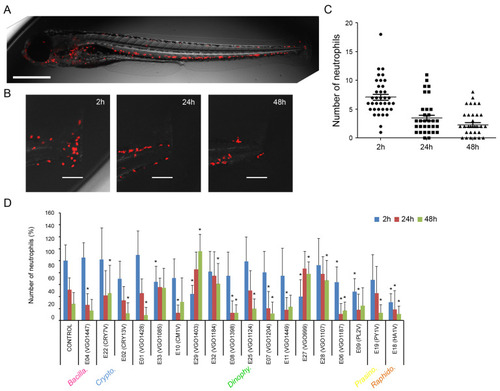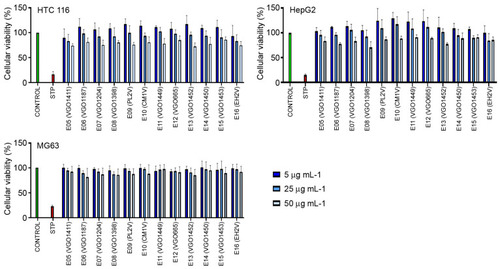- Title
-
Screening of Microalgae for Bioactivity with Antiviral, Antibacterial, Anti-Inflammatory and Anti-Cancer Assays
- Authors
- Hernández-Urcera, J., Romero, A., Cruz, P., Vasconcelos, V., Figueras, A., Novoa, B., Rodríguez, F.
- Source
- Full text @ Biology (Basel)
|
Antiviral activity of the extracts against SVCV. The different algal groups selected are indicated. The viral titer was determined at day 6 post-infection as the viral dilution that causes an infection of 50% of the cell line (TCID50). Results were expressed as the mean and SD of four titrations. A |
|
The antibacterial activity of extracts (10 μg mL−1) against Gram (−) bacteria. The different algal groups selected are indicated. The bacterial growth was evaluated by measuring the OD600 nm for 24 h; ( |
|
The antibacterial activity of extracts (10 μg mL−1) against Gram (+) bacteria. Table shows the sampling points where the differences in OD600 nm were statistically significant at |
|
In vivo evaluation of the anti-inflammatory activity of the extracts (at 25 μg mL−1) using zebrafish larvae. The different algal groups selected are indicated. ( |
|
Anti-cancer activity of the extracts against HCT 116, HepG2 and MG-63. Results represent the mean and SD of three independent experiments. STP (staurosporine). |

